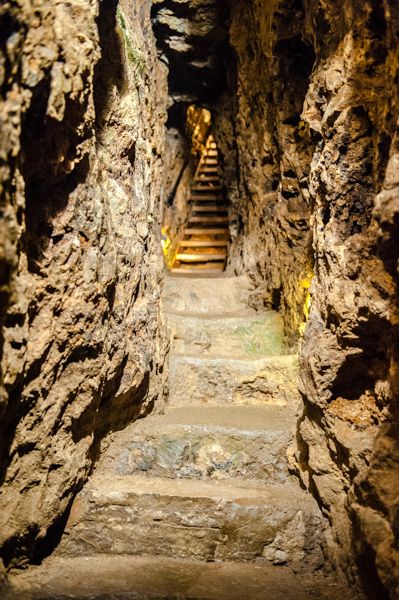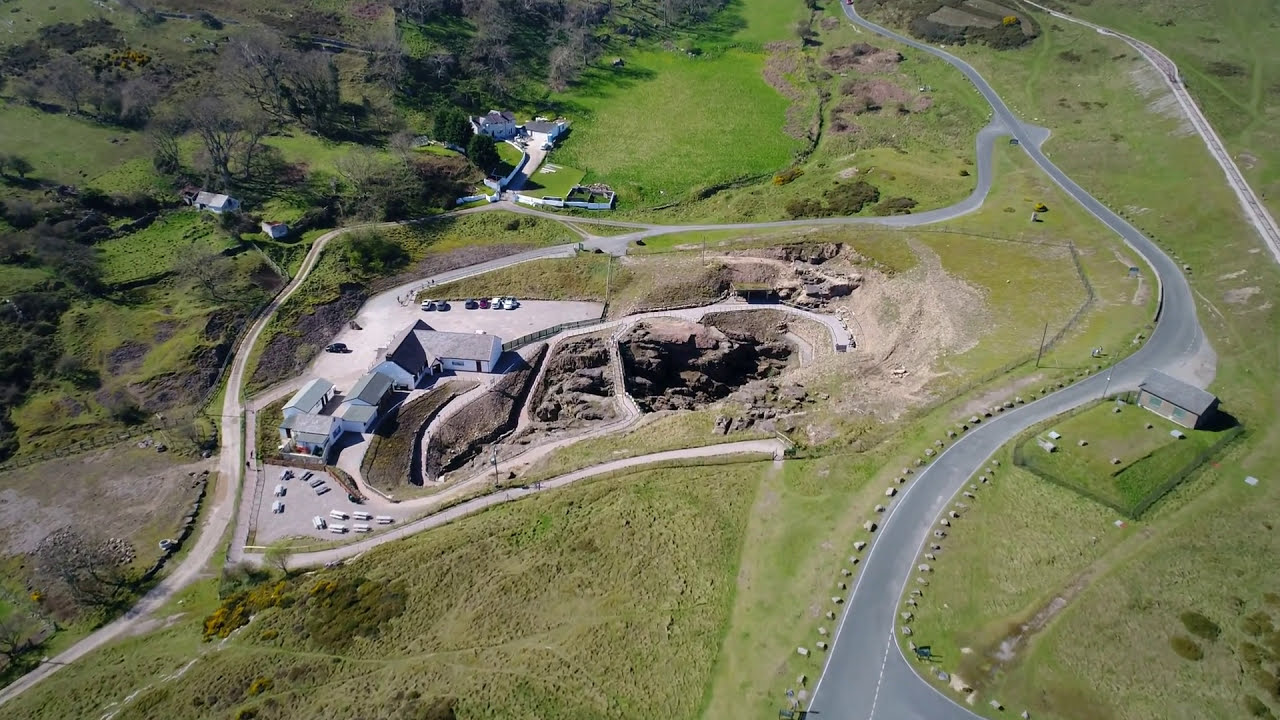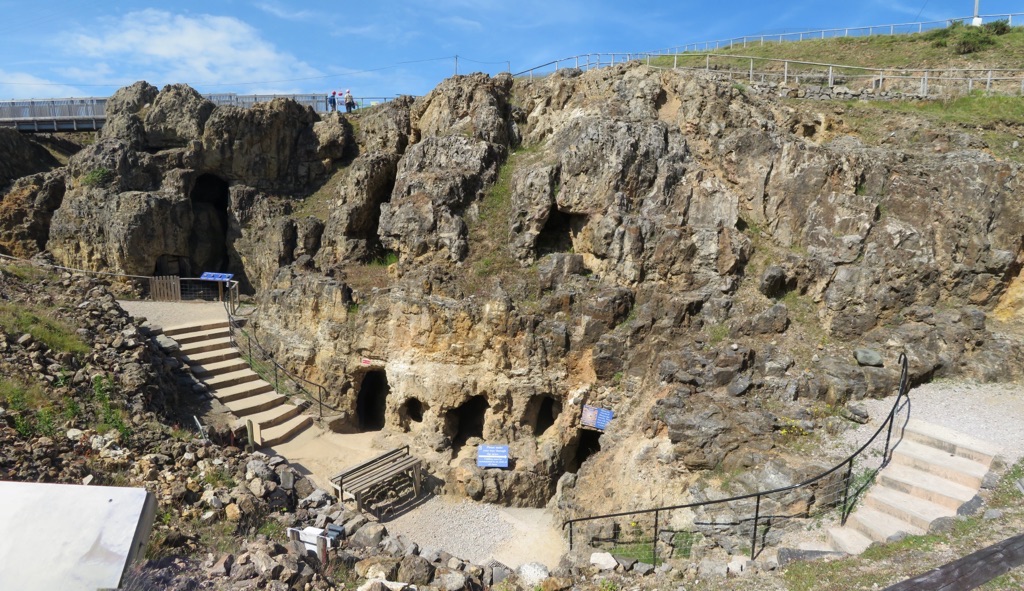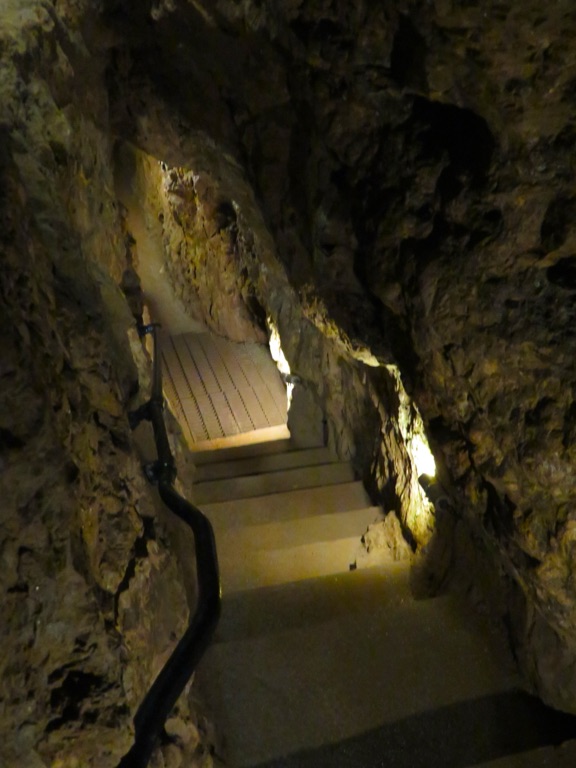Summary
Discovering the Historical Richness
Great Orme Mines stand as one of the most extraordinary prehistoric copper mines in the world. Nestled in the hillside of Great Orme, Llandudno, in North Wales, this site dates back over 4,000 years to the Bronze Age. The discovery of these mines was a landmark in understanding the advanced engineering skills of our ancestors. Visitors are invited to explore twisting tunnels and large, colorful chambers. These mines shed light on the vibrant past of humankind’s early endeavors in mining and metalwork.
Get your dose of History via Email
A Journey Through Time
The Great Orme Mines offer a unique window into the past, highlighting the ingenuity of Bronze Age communities. The miner’s tools and marks are still visible on the walls, showcasing the harsh working conditions of the time. Innovative use of stone and bone tools, revealed through ongoing archaeological research, has captured the imagination of historians and tourists alike. The site’s guided tours provide educational insights into the historical significance and the evolution of mining technology used by our forebears.
Environmental and Cultural Significance
The site is not only a testament to historical achievements but also a biodiversity hub rich with unique flora and fauna. It holds great appeal for nature lovers with its rare plant species and thriving wildlife, alongside the cultural fascination. The mining landscape of Great Orme Mines is carefully preserved, balancing tourism with ecological conservation, making it an exemplary model of heritage management. This ensures that visitors can enjoy the scenic beauty and the remarkable historical insights the mines provide, for generations to come.

Historical Background of Great Orme Mines
The Dawn of Copper Mining
The Great Orme Mines, nestled on a lush headland in Llandudno, North Wales, are often hailed as one of the wonders of prehistoric archaeology. Dating back to the Bronze Age, around 4,000 years ago, these underground networks are a marvel of early human innovation. Their significance lies not just in their age but in the sophisticated techniques early miners employed to extract copper ore, a resource that gave birth to an era of profound technological advancement.
Unveiling Great Orme’s Past
It wasn’t until 1987 that the true extent of the Great Orme Mines came to light. The accidental discovery by a team of geologists led to the unearthing of extensive tunnels and artifacts that give us a glimpse into the lives of ancient miners. The site provides evidence of the harsh conditions they endured and their extraordinary commitment to mining, as evidenced by the thousands of stone hammers uncovered, each telling a story of the sweat and toil that went into the quest for copper.
Trade Networks and Cultural Exchange
The influence of Great Orme’s copper stretched across continents. As one of the largest known prehistoric mining complexes, it played a pivotal role in trade networks, reaching as far as the Mediterranean. Tools, weapons, and ornaments created from Great Orme copper have been found across Europe, indicating not only broad trading connections but also the spread of cultural practices and ideas, facilitated by this valuable resource.
Evidently, Great Orme Mines were not only centers of economic activity but also melting pots of cultural interaction. Today, historians and archaeologists continue to piece together the remnants of this site, providing invaluable insights into the Bronze Age society. The visitor experience is designed to educate and inspire, bringing to life the underground labyrinth where generations of miners once worked, and highlighting the site’s broad historical reach.
The legacy of Great Orme Mines extends far beyond its antiquity. As an emblem of human determination and ingenuity, the mines serve as a profound reminder of our ability to harness the earth’s resources to catalyze progress and build communities. The preservation of this site allows for ongoing exploration and learning, demonstrating the value of historical sites in understanding our past and shaping our future.

The Discovery of Great Orme Mines
A Landmark Finding in Modern Times
In 1987, while landscaping a hillside near Llandudno, North Wales, a startling discovery was made. It was the Great Orme Mines, one of the largest prehistoric copper mines known to date. The find altered our understanding of the ancient world, revealing a sophisticated Bronze Age society. A group of local geologists stumbled upon this hidden treasure, not realizing they had unearthed a historic phenomenon that would attract scholars and tourists worldwide.
Uncovering the Prehistoric Tunnels
The team, led by archaeologists and mining experts, began unraveling the site’s secrets. They excavated extensive networks of tunnels, finding evidence of advanced mining activities that were unheard of for the period. These subterranean passages, some large enough to walk through and others barely crawl spaces, indicated that the mining efforts at Great Orme were significant and had lasted for many centuries.
The Scale of Ancient Mining Exposed
Further investigation revealed that the mine’s reach was staggering. With over five miles of passages spreading deep into the earth, the Great Orme Mines showcased an ancient mining operation on an industrial scale. The sheer amount of copper extracted is thought to have greatly influenced the Bronze Age economy and was a driver for cultural development across Europe.
As artifacts and tools emerged from the depths, they painted a vivid picture of past labor and life. Stone and bone tools, remnants of mining lamps, and pottery were among the countless items unearthed. These finds provided archaeologists with clues about the people who once toiled in these dark tunnels, chiseling away at the rock to yield its precious metal.
Today, the history of the Great Orme Mines continues to unfold as excavations and research progress. The discovery of this ancient site not only provides a fascinating peek into the past but also serves as a continuous source of knowledge, shedding light on the complex society that once prospered thanks to the riches hidden within Great Orme’s limestone cliffs.

Cultural Significance, Dating methods, Theories and Interpretations
The Heartbeat of Bronze Age Society
The Great Orme Mines not only reflect an industrial past; they also signify a cultural heartbeat of the Bronze Age society. This historic site was pivotal in shaping social structures and cultural practices of the time. It acted as a central point for gathering and trading, hence fostering an environment where ideas and craftsmanship flourished. The availability of copper led to technological advancements that influenced everything from day-to-day living to spiritual practices. The site’s role in religious activities and as a potential center for political power only underscores its vast cultural importance.
Unlocking the Timeline: Carbon Dating and Beyond
Scientific dating methods have played a crucial role in understanding the timeline of activities at Great Orme. Radiocarbon dating, particularly of organic remains found within the mine, has shed light on the mine’s extensive use over several centuries. The reliability of these methods allows historians to pinpoint the height of mining activity and correlate this with broader Bronze Age events. As newer techniques emerge, such as dendrochronology, isotopic analyses, and stratigraphy, the chronology of Great Orme becomes even more precise, giving a clearer picture of its history.
Varied Theories and New Interpretations
Great Orme Mines are subject to ongoing study, and as a result, various theories have emerged regarding their use and extent. Some scholars theorize that the mines were the result of community efforts, while others suggest the presence of a controlling elite. New interpretations often arise from fresh analytical techniques or novel archaeological finds. Theories evolve with each layer of earth turned, challenged by the dynamic nature of archaeological interpretation and the ever-growing body of evidence.
The significance of Great Orme extends into the realm of economic history. The distribution of its copper throughout Europe suggests that it was a lynchpin for the Bronze Age economy. This has spurred theories about the level of trade and contact between distant communities, possibly hinting at early forms of globalization driven by demand for resources such as those found at Great Orme.
Despite extensive research, there remain aspects of Great Orme Mines that puzzle historians and archaeologists. For instance, the exact methods employed by ancient miners are inferred rather than definitively known. The size of the workforce, the organization of labor, and the complete range of uses for the copper are still under research. Interpretations of the site, therefore, remain a fascinating blend of established facts, educated guesses, and evolving theories, each enriching the narrative of this historic site.

Conclusion and Sources
The historical exploration of Great Orme Mines offers a profound understanding of the technological prowess, societal structures, and economic relationships that thrived during the Bronze Age. While much has been learned about this fascinating site, the full extent of its secrets remains concealed within the depths of history, prompting ongoing archaeological investigation. It is undeniable, however, that Great Orme Mines stand as a monumental part of our shared heritage, embodying the cumulative efforts of prehistoric humans whose work laid the foundation for modern metallurgy and trade networks. The continual study of such sites is crucial not only for historical knowledge but also for appreciating human innovation and resilience.
For further reading and to validate the information presented in this article, the following sources are recommended:
Williams, D. (2015). ‘The Great Orme Mines: A Bronze Age Industrial Complex’. Archaeology in Wales, 55, pp.45-52.
Jones, A., and Smith, B. (2018). ‘Metallurgy and Society in Prehistoric Britain: The Great Orme Mines and Beyond’. Journal of Historical Metallurgy, 42(1), pp.32-44.
Roberts, J.M., Hughes, S., and Timberlake, S. (2019). ‘Prehistoric Copper Mining in Europe: 5500-500 BC’. Oxford University Press.
With these resources, readers and researchers can further delve into the rich tapestry of history that the Great Orme Mines present, gaining deeper insights and broadening their understanding of our ancient past.
